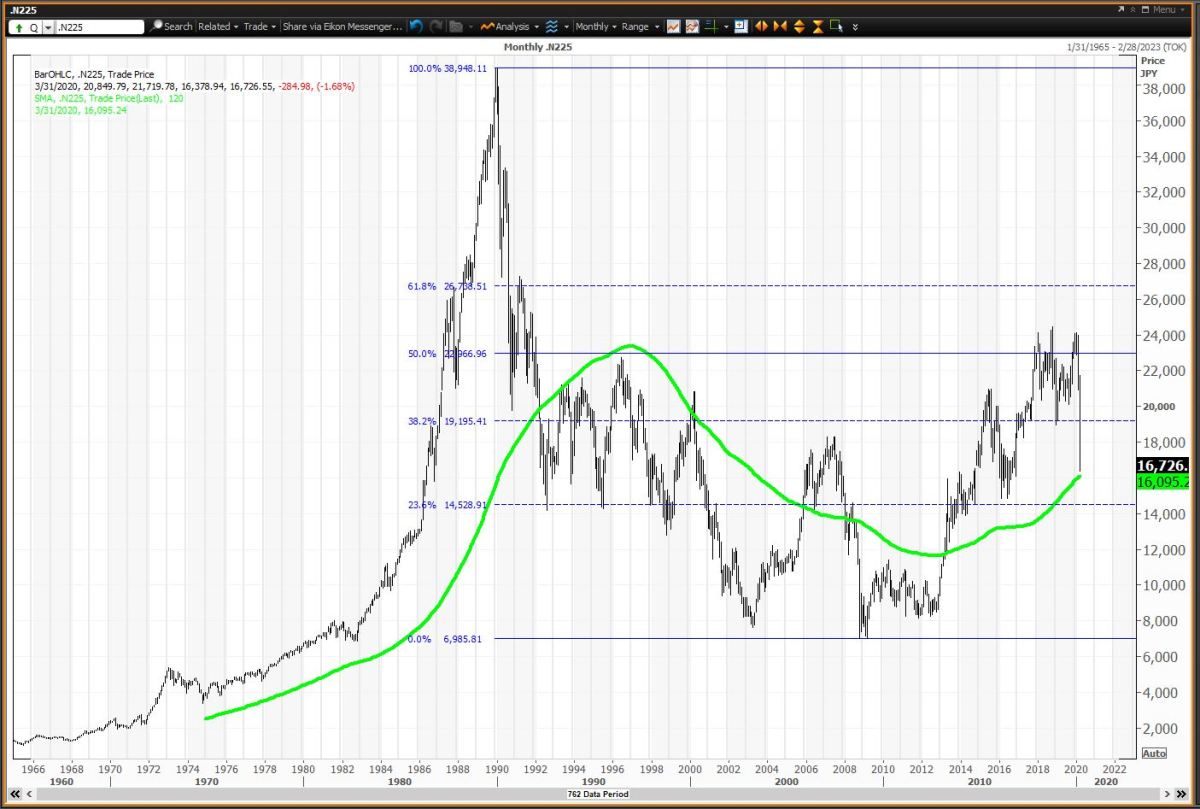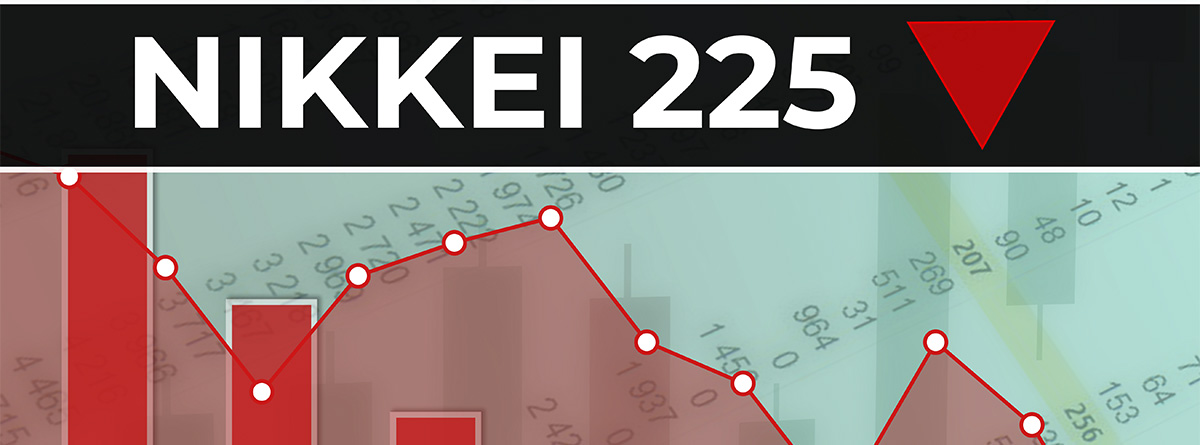Market Overview

The Nikkei 225 is a stock market index that tracks the performance of the top 225 publicly traded companies in Japan. It is one of the most widely followed stock indices in the world and is considered a barometer of the Japanese economy.
The Nikkei 225, a stock market index in Japan, has been on a roller coaster ride lately. Its performance has been closely tied to global economic conditions, including the recent tensions between france austria. While the Nikkei has rebounded in recent weeks, analysts remain cautious about its long-term prospects.
The Nikkei 225 was first launched in 1950 and has since become a global benchmark for Japanese equities. The index is calculated by taking the total market capitalization of the 225 companies and dividing it by the Nikkei 225 divisor, which is a constant number that is adjusted periodically to ensure that the index remains stable over time.
The Nikkei 225, a benchmark for the Japanese stock market, is a weighted average of the 225 most traded stocks on the Tokyo Stock Exchange. It has a long and storied history, dating back to 1949, and has weathered many storms, including the 1987 stock market crash and the 2008 financial crisis.
Despite these challenges, the Nikkei 225 has proven to be a resilient indicator of the Japanese economy, and it remains a closely watched barometer of global market sentiment. Nikkei 225 is a key indicator of the Japanese economy and a bellwether for global financial markets.
The Nikkei 225 is heavily influenced by a number of factors, including the performance of the Japanese economy, the value of the yen, and the global economic climate. The index has a long history of volatility, and it has experienced both bull and bear markets over the years.
Key Factors Influencing the Nikkei 225
- The performance of the Japanese economy is the most important factor that influences the Nikkei 225. A strong economy leads to increased corporate profits, which in turn leads to higher stock prices.
- The value of the yen is also a major factor that influences the Nikkei 225. A weaker yen makes Japanese exports more competitive, which can lead to increased corporate profits and higher stock prices.
- The global economic climate can also have a significant impact on the Nikkei 225. A strong global economy can lead to increased demand for Japanese exports, which can lead to higher corporate profits and higher stock prices.
Sector Analysis: Nikkei 225

The Nikkei 225 index comprises a diverse range of sectors, reflecting the broad spectrum of industries that drive the Japanese economy. Each sector has its own unique dynamics, and their performance over time can vary significantly.
One of the largest sectors in the Nikkei 225 is technology, which includes companies such as Sony, Toshiba, and Nintendo. The technology sector has been a major driver of growth for the index in recent years, as demand for electronic devices and semiconductors has surged.
Manufacturing, Nikkei 225
The manufacturing sector is another important component of the Nikkei 225. Companies in this sector include Toyota, Honda, and Mitsubishi Heavy Industries. The manufacturing sector has benefited from strong global demand for Japanese automobiles and industrial machinery.
Financial Services
The financial services sector is also well-represented in the Nikkei 225. Companies in this sector include Mitsubishi UFJ Financial Group, Sumitomo Mitsui Financial Group, and Mizuho Financial Group. The financial services sector has been boosted by low interest rates and a stable economic environment.
Comparison to Other Indices
The Nikkei 225 index has outperformed many other major global indices in recent years. For example, the Nikkei 225 has gained over 20% since the beginning of 2023, while the S&P 500 index has only gained around 10%.
Company Analysis

The Nikkei 225 index comprises some of Japan’s most prominent and influential companies, representing a diverse range of industries and sectors. These companies play a significant role in the Japanese economy and have a substantial global presence. By examining their financial performance, competitive landscape, and growth prospects, we can gain valuable insights into the overall health and direction of the Japanese market.
In this section, we will delve into the financial analysis of several key companies listed on the Nikkei 225 index, including revenue, earnings, and key financial ratios. We will also discuss their competitive landscape and growth prospects, providing a comprehensive overview of their business operations and market position.
Toyota Motor Corporation
Toyota Motor Corporation is a global leader in the automotive industry, renowned for its high-quality vehicles, innovative technology, and efficient production processes. The company has a strong presence in both domestic and international markets, with a wide range of products catering to diverse customer segments.
- Revenue: Toyota’s revenue has grown steadily over the past few years, reaching a record high of JPY 36.3 trillion in 2022. This growth has been driven by strong demand for its vehicles, particularly in emerging markets.
- Earnings: Toyota’s earnings have also been on an upward trajectory, with the company reporting a net income of JPY 2.3 trillion in 2022. This growth has been supported by cost-cutting measures and increased sales volume.
- Key Financial Ratios: Toyota’s key financial ratios indicate a strong financial position. The company has a high gross profit margin of over 20%, a healthy return on equity of over 15%, and a low debt-to-equity ratio of less than 1.
Toyota faces intense competition from other global automakers, including Volkswagen, General Motors, and Hyundai. However, the company’s strong brand reputation, technological prowess, and efficient supply chain give it a competitive edge.
Toyota’s growth prospects remain positive. The company is investing heavily in electric vehicles and autonomous driving technology, which are expected to be key drivers of growth in the automotive industry in the coming years.
The Nikkei 225, Japan’s benchmark stock index, has been on a rollercoaster ride lately. After reaching a record high in October, it has since fallen by more than 10%. This volatility is likely to continue in the coming months, as investors grapple with uncertainty about the global economy.
In the meantime, there are other investment opportunities to consider, such as france autriche. The Nikkei 225 remains a bellwether for the Japanese economy, and its performance will be closely watched by investors around the world.
As the sun sets, casting long shadows across the trading floors, the Nikkei 225 index lingers in a state of uncertainty. Its movements, like the ebb and flow of the tide, are influenced by myriad factors. Among them, the outcome of the pivotal match between Belgium and Slovakia could have a ripple effect on the index’s trajectory.
With each goal scored and every penalty kick saved, the Nikkei 225 sways gently, reflecting the hopes and fears of investors.
The Nikkei 225 index, a barometer of Japanese stock market performance, has been on a rollercoaster ride in recent months. Some analysts attribute this volatility to global economic uncertainty, while others point to the impact of Ben O’Connor ‘s recent comments on the state of the Japanese economy.
O’Connor, a prominent economist, has expressed concerns about the country’s high levels of debt and its aging population. These concerns have raised questions about the long-term sustainability of Japan’s economic growth, and have contributed to the uncertainty surrounding the Nikkei 225.